Welding is not a cup of tea for everyone. It requires adequate knowledge and skills to perfectly do the job. No matter if you are an amateur or professional welder; you know that the proper selection of welding rods is crucial to generate better welding.
So, what are the Stick welding rod types & their uses? There are primarily six types of welding rod types. These categories include 6010 Welding Rod, 6011 Welding Rod, 6012 Welding Rod, 6013 Welding Rod, 7018 Welding Rod, and 7024 Welding Rod. Each rod has its unique characteristics and use.
Go through the entire article to know more about different stick welding rods and their use.
So, let’s start.
What is a welding rod?
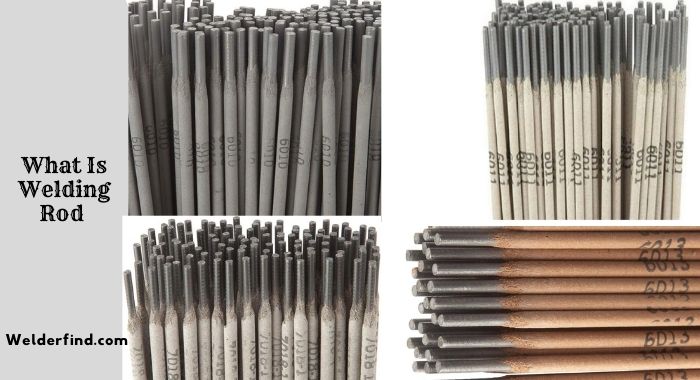
Welding rods are commonly familiar as welding electrodes. It is basically a coated metal wire placed in a welding machine that generates the welding arc by using electric current. Welding rods melt and fusion the base metals.
Therefore, their main job is to connect two materials through pressure or heat during the welding process.
Classification of stick welding rods
People have two options when it comes to stick welding rods: consumable and non-consumable welding rods.
Consumable Welding Rod
The consumable welding rod melts down in the welding process and eventually accumulates on the weld bead because of arc heating. Welders mostly use these rods in MIG and stick welding. Since the welding rods provide sufficient filler to cover the root gap, no additional filler is required. Therefore, these rods are not durable.
The selection of consumable electrodes must be consistent with the base materials. The electrode’s material and the base metal must be compatible to generate the desired outcomes.
Non-consumable welding rods
Unlike consumable electrodes, this welding rod does not melt down during the welding process. People mostly use these rods to develop and maintain the electric arc. Since the electrode doesn’t provide the necessary filler, welders need to supply additional filler. This electrode has greater longevity compared to consumable electrodes.
Furthermore, welders can independently choose the material of the electrode type. They don’t have to match the compatibility issue in the welding process. Here compatibility lies between the base metals and filler materials.
Stick Welding Electrode types based on Material
One can further classify the electrodes into five categories based on materials. The classification includes Low hydrogen carbon steel, Mild steel, Stainless steel, Bronze, and Aluminum.
- Low hydrogen carbon steel electrode:
This electrode contains low hydrogen iron powder that makes it ideal for low-temperature applications. They can efficiently join low alloy steels and carbon steels. Besides, this all-position electrode offers impressive durability and excellent weld beads.
- Mild Steel Electrodes
Mild Steel Electrodes feature lower concentrations of carbon steel deposit. They are popular for generating stable arcs with lower spatter and soft weld beads. They are consistent with AC sources.
- Stainless steel electrodes
Stainless steel electrodes offer high-quality welding outcomes regardless of environmental conditions. They feature low-carbon stainless steel and are resistant to corrosion.
- Bronze Welding Rods
Bronze Welding Rods feature a lower melting point. Therefore, welders use them to restore bronze materials and to join copper with other metals.
- Aluminum Welding Rods
Aluminum Welding Rods are versatile and mostly suitable for welding various aluminum alloys. They are easy to operate and offer rapid weld rate with less spatter.
Stick Welding Electrode types based on coating
People will find three types of Coated stick welding electrodes in the market: Light, medium and heavy coated welding rods.
- Light-Coated welding rods
They feature a thin flux coating and are unable to develop a stable shielding gas. However, they can protect the pool of the weld from pollutants, such as sulfur and phosphorus. They also generate less slag compared to other two types of electrodes.
- Medium Coated welding rods
These electrodes provide excellent arc control, removable slag, and weld position flexibility. Welders mostly use this welding rod in bridge construction, pipeline welding and offshore drilling.
- Heavy Coated welding rods
Heavy-coated welding rods are of excellent-quality compared to the parent metal that result in high-quality welding. Their coating factor ranges from 1.6 to 2.2. Therefore, they can develop adequate shielding gas to safeguard the weld pool.
Stick Welding Electrode types based on Numbers
American welding society introduced an alpha-numeric system for categorizing different welding rods. In this approach, the name of welding rods consists of letters and numbers. There are six types of Stick welding rods according to this system.
In the alpha-numeric system, E refers to the electrode. The following two digits indicate minimum tensile strength. The third number refers to the position where the electrode will be used. Welders can use electrodes in four positions: flat, vertical, horizontal and overhead. Finally, the last digit indicates the type of coat and welding current.
Here is the overview of each stick welding rod along with their use:
E 6010
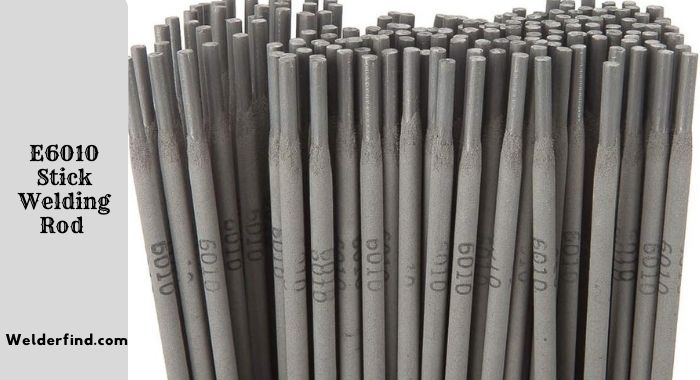
It is one of the best electrodes for deep penetration and high-power density. E 6010 is particularly popular for welding in overhead and vertical positions. It generates a flat weld bead with a small amount of deposition. They are also simple to control.
However, only DC welding machines are compatible with E 6010 electrodes. Moreover, this electrode might be challenging for inexperienced welders due to its extremely tight arc.
Major uses of E 6010:
- water towers
- Pipes
- shipyard welding
- other applications using thick metals.
E 6011
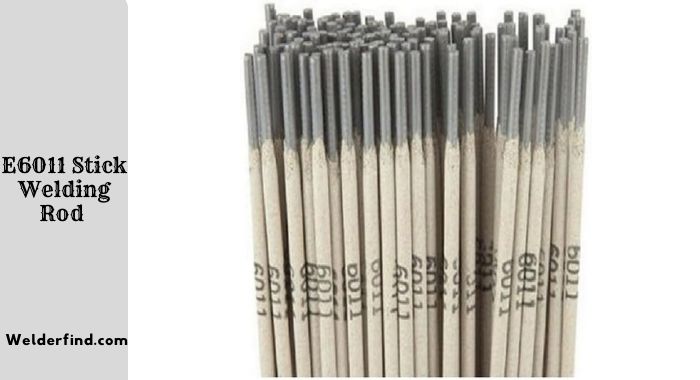
E 6011 creates an arc that is simple to regulate and facilitates high-quality metal welding and deep penetration. Welders can use these all-position welding rods according to the project requirement.
Besides, it generates a mild arc with minimum spatter and medium penetration. These electrodes work well on heavy metals, coated surfaces, and even greasy surfaces. AC and DC welding machines can use these welding rods.
Major uses of E 6011:
- Repairing engines and cars
- Agricultural tools
- Greasy, dirty, and rusty stuff
E 6013
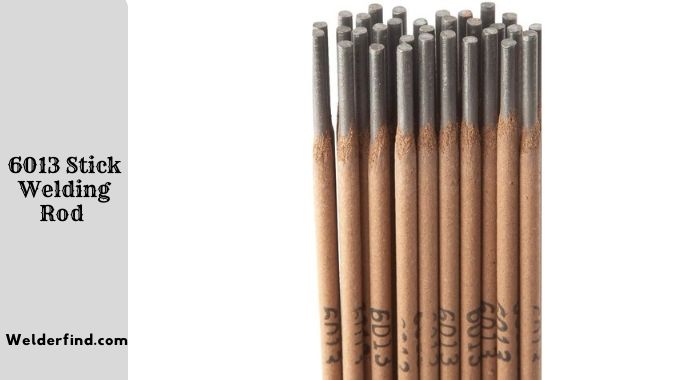
The 6013 is another all-purpose welding rods. If you want a mild and steady arc that is simple to control, then 6013 will be a perfect option. It offers mild penetration with a lower spatter. Besides, AC and DC welding machines can use E 6013.
Major uses of E 6013:
- E 6013 welding rod use thin sheet metal applications.
- ship construction task
- fabrication task.
E 7018
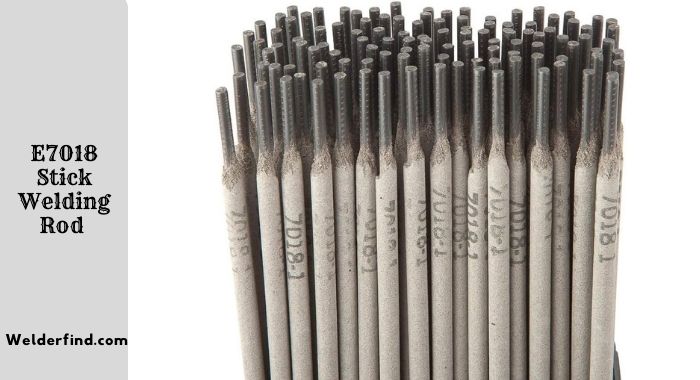
7018 welding rod is one of the most customizable welding rods. The electrode is ideal for welding low- to moderate-carbon steel. This rod features an iron covering with a little amount of hydrogen.
As a result, it can protect the beads and spatter from outside influences like air and moisture. In addition, both AC and DC welders can use 7018 welding rods.
Major uses of E 7018:
- Factories
- Bridges
- power plants
- other heavy-duty applications
E 7024
The high content of iron powder, high-deposition, and high speed are some of the key characteristics of this stick welding rod. The iron powder makes the welding procedure comparatively easier for the new welders. These electrodes are easy to operate and create an impressive bead outlook. They are also suitable for AC and DC sources. Welders usually use them for flat or horizontal welding. If you want a smooth finish welding, you can highly consider E 7024.
Factors for selecting stick welding Rods
People must consider the following aspects when selecting stick welding Rods:
Base Metal
People must ensure that the base metal and the workpiece are compatible with one another to produce a high-quality and long-lasting weld.
Spark Type
When the base metal is running against the grinder, observe the spark it creates. If you notice more flares in the sparks, it means that the base metal has a high level of carbon content.
Check For Magnetism
If your base metal includes magnetism, it contains iron, alloy steel and carbon steel. In contrast, non-magnetic base metals contain pure stainless steel, aluminum, and copper.
Strength of Tensile
It is vital to make sure that the tensile strength of the electrode and base metal are compatible. Otherwise, it will result in crack welding. One can check the tensile strength by observing the alpha-numeric naming system of the rods. The first two digits of the name indicate the welding rods’ tensile strength.
Welding Current
Some electrodes are compatible with both AC and DC sources. Other electrodes support one of these two sources. One can check this compatibility by the fourth digit of the electrode’s name. here is the list of welding rod’s Current compatibility:
| Fourth digit | Welding Current |
| 0 | DC (Positive) |
| 1 | AC or DC (Positive) |
| 2 | AC or DC (negative) |
| 3 | AC, DC (both Positive & negative) |
| 4 | AC, DC (both Positive & negative) |
| 8 | AC or DC (Positive) |
Final verdict
Generating an impressive welding outcome is challenging. Only adequate knowledge about the process and the use of proper tools like welding rods can facilitate this task. There are multiple options when it comes to electrodes and a wrong choice of electrode can ruin your welding.
Therefore, I have gone detailed on different Stick welding rod types & Their uses. I believe the readers can now select the right welding rods on their own to produce better welding.
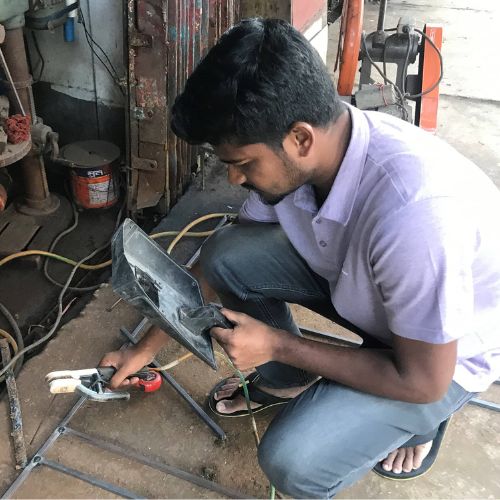
It’s appropriate time to make a few plans for the long run and it’s time
to be happy. I’ve read this publish and if I could I desire to recommend you few fascinating things or tips.
Perhaps you could write subsequent articles regarding this article.
I desire to learn even more issues approximately it!
I will create content map and write more about the issues regarding stick welding and its accessories in future. Thanks for your suggestion.